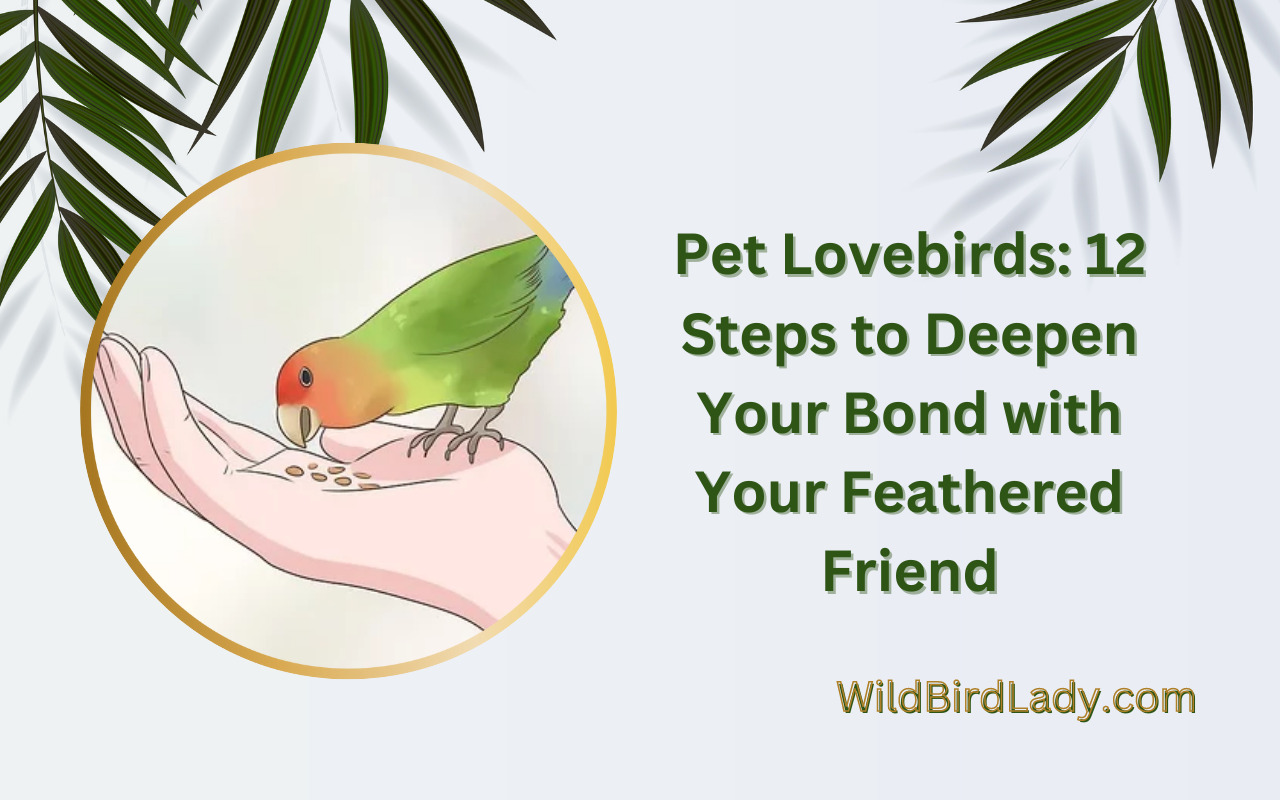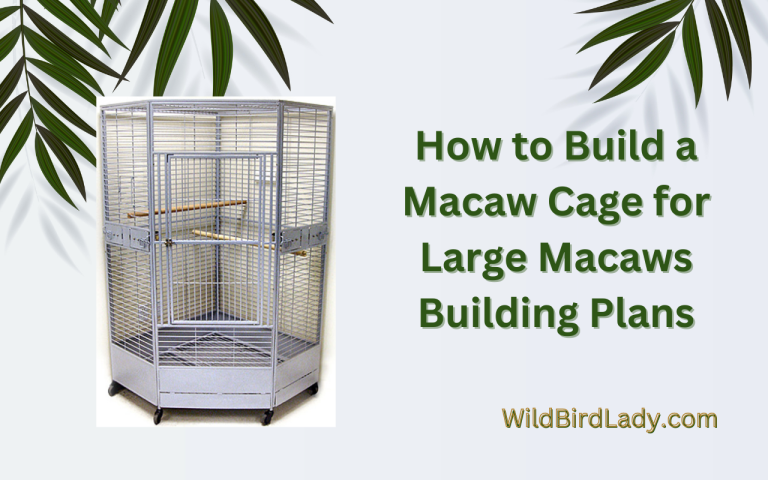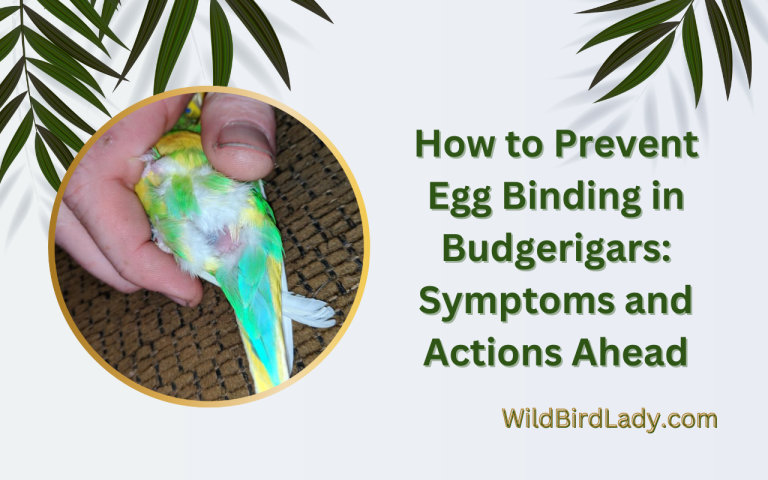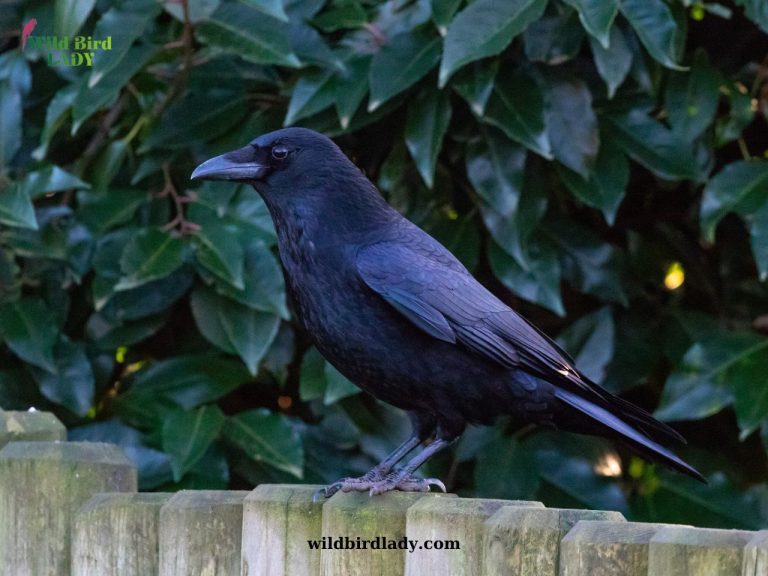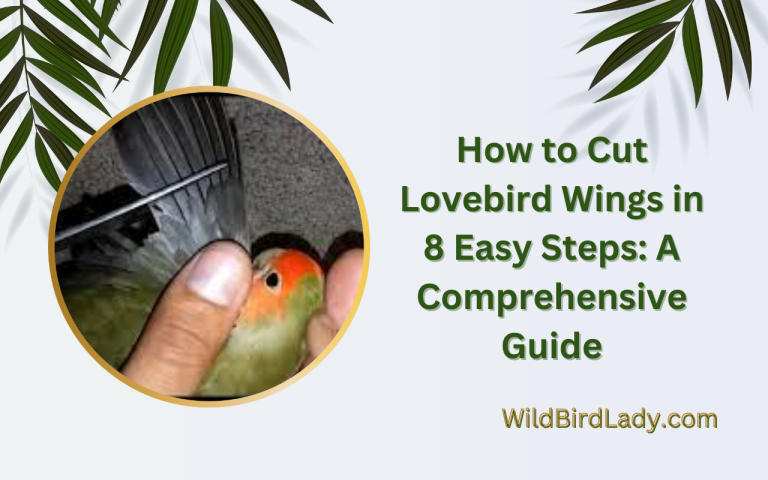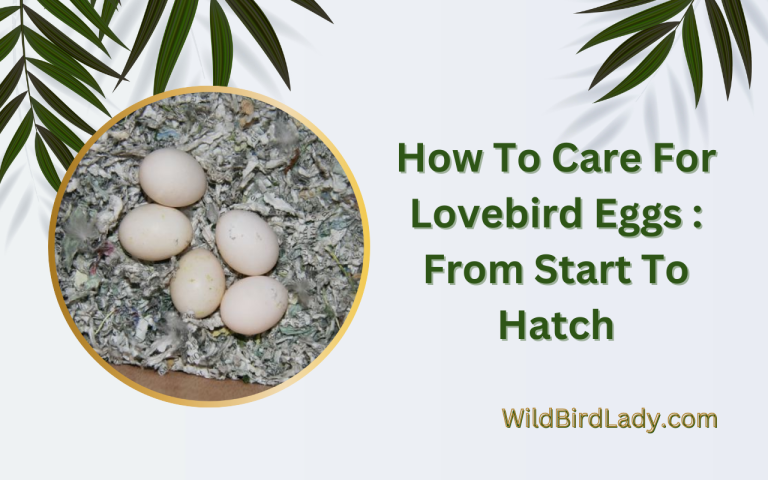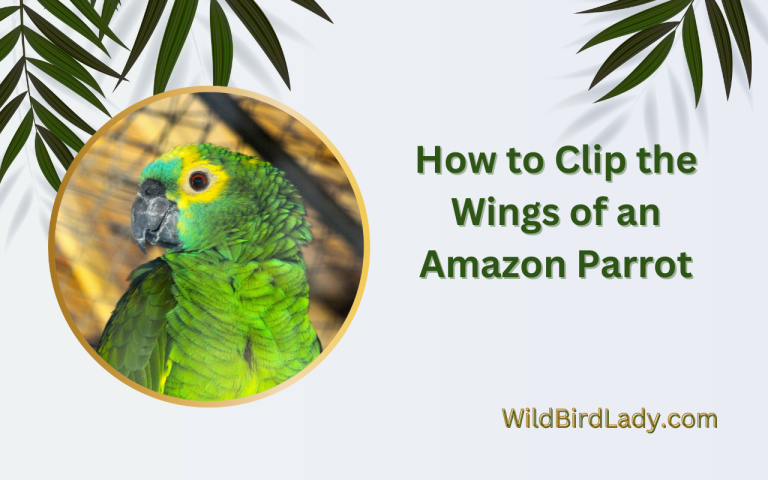Pet Lovebirds: 12 Steps to Deepen Your Bond with Your Feathered Friend
🐥 To bond with your lovebird, spend time with your bird every day and socialize with it frequently. Talk, sing, and whistle to your bird to establish a connection.
Pet lovebirds are fascinating and lively companions that thrive with loving care and attention. These small, brightly colored birds are intelligent and social, and they can make fantastic pets for adults or children. However, as with any pet, bonding is crucial in developing trust and affection between you and your lovebird.
Bonding with a lovebird is an ongoing process that requires patience, kindness, and persistence. With a little attention and care, you can successfully bond with your lovebird and enjoy a joyful and satisfying relationship with your feathered friend. Here are some useful tips to help you bond with your lovebird.
Understanding Lovebirds
Lovebirds are delightful pets that can brighten up any household with their vibrant colors, playful personalities, and affectionate demeanor. If you’re a new lovebird owner or looking to get one, it’s essential to understand these charming birds’ characteristics and behaviors.
This section’ll cover the fundamentals of lovebirds, the different types, behavior patterns, and how to choose the right one for you.
Characteristics Of Lovebirds
Lovebirds have a distinct appearance and provide a fulfilling companion experience. Here are some of their key characteristics:
- Lovebirds are small birds, usually between 5 to 7 inches in size.
- They have vibrant, stunning colors, including green, blue, yellow, and red.
- Lovebirds are monogamous and mate for life, forming strong bonds with their owners.
- They are highly social birds and enjoy playing with toys and interacting with their owners.
- Lovebirds are intelligent and can learn various tricks and mimic the sounds they hear around them.
Different Types Of Lovebirds
Nine types of lovebirds are recognized by the scientific community, but only four are commonly kept as pets. Here’s a brief overview of the four main types:
- Fischer’s lovebird: They are social, inquisitive birds known for their playful behavior.
- Peach-faced lovebird: This is the most commonly kept lovebird as a pet. They are friendly, adaptable, and energetic.
- Black-masked lovebird: These birds are charming and full of energy, making them an ideal pet for the bird lover who wants a playful and active bird.
- Nyasa lovebird: They are among the least common lovebird type as a pet. Nyasa lovebirds are shy and reserved but can bond strongly with their handlers.
Behavior Patterns Of Lovebirds
Lovebirds are known for their quirky personalities and playful behavior, but different birds have different tendencies. Here are some typical behavior patterns of lovebirds:
- They are vocal and make a variety of chirping, high-pitched noises.
- Lovebirds love to chew things with their strong beaks, including toys and household items.
- They are active and need plenty of room to fly and play.
- Lovebirds need social interaction and can develop separation anxiety if left alone for too long.
- Some lovebirds may be territorial and aggressive towards other birds of the same sex.
How To Choose The Right Lovebird For You
Choosing the right lovebird for your household is essential to ensure a long and fulfilling relationship. Here are some factors to consider before making your decision:
- Research different types of lovebirds to see which matches your personality and lifestyle.
- Look for a reputable, experienced breeder or adoption agency that can help match you with the right bird.
- Consider the bird’s age, temperament, and health before making a commitment.
- Spend time interacting with the bird before bringing them home to see if you’re compatible.
- Ensure that your home is bird-friendly safe before bringing your lovebird home.
Understanding lovebirds’ characteristics and behaviors is essential to providing your pet a happy and fulfilling life. By following these tips, you can build a strong bond with your feathered friend, one that will last a lifetime.
Creating A Comfortable Habitat For Lovebirds
Lovebirds are one of the most delightful and affectionate pets you can have. To ensure your feathered friend is happy and healthy, creating a comfortable habitat for your lovebird is paramount. Here are some useful tips to help you create a cozy and secure home for your lovebird.
Choosing The Right Size Cage For Your Lovebird
Lovebirds love to fly around and play, so choosing a spacious cage is vital to ensure they have enough room. The cage should be large enough to allow them to spread their wings fully without touching the sides. The ideal size for a lovebird’s cage is at least 24 inches long, 18 inches wide, and 24 inches tall.
Here are some key points to remember when selecting a cage for your lovebird:
- A vertical cage with a moderate size cook is preferable for lovebirds.
- Simple bar spacing should be approximately 0.5 inches in width to maintain the bird’s safety, and the cage is easy to clean.
- The cage should have a swing, a perch, and enough room for toys to avoid boredom.
Suitable Bedding And Nesting Materials
Lovebirds like burrowing into their bedding, so choose soft materials like shredded paper, hay, or wood shavings. Avoid using harsh materials such as cedar shavings or newspaper, as they could harm the bird. Make sure to change the bedding at least once a week to keep the cage fresh and clean.
Essential Toys And Accessories To Keep Your Lovebird Engaged
Lovebirds are intelligent birds and require stimulus to prevent boredom and stress. The cage should have a variety of toys such as colorful chew toys, ladders, bells, and swings for your lovebird to play with. Here are some key points to remember when selecting toys and accessories:
- Choose different toys with different textures, colors, and shapes to encourage playtime.
- Avoid toys with sharp edges or pieces that can break off and harm your lovebird.
- Provide your lovebird with nesting materials like coconut fiber and grasses to create a cozy environment where they can rest.
Creating A Safe Environment For Your Lovebird
Your lovebird’s safety is paramount, so creating a secure environment is essential. Here are some key points to remember:
- Place the cage in a safe location away from direct sunlight, drafts, and other pets.
- Ensure that all windows and doors are closed to prevent escape or injury.
- Always supervise your lovebird when outside their cage to prevent accidents.
Appropriate Lighting, Temperature, And Humidity Levels For Your Lovebird
Lovebirds require a well-lit, warm, and humid environment to maintain their health. Here are some key points to remember:
- Provide adequate light for your lovebird. Natural light or full-spectrum bulbs are preferable.
- Keep the temperature between 65 and 85 degrees fahrenheit.
- Maintain a relative humidity of 40% to 60%.
By following these simple steps, you can create a comfortable and secure habitat for your lovebird, that ensures their safety, health, and happiness. Caring for your lovebird is a rewarding experience that strengthens the bond between you and your feathered friend.
Providing A Healthy Diet For Lovebirds
Lovebirds are fascinating creatures. They are expressive, playful, and affectionate. As a pet owner, you want to ensure you provide your lovebird with a healthy and balanced diet to keep them healthy and happy. Here are 12 steps you should follow to provide your lovebird with the essential nutrients they need!
Nutritional Requirements For Lovebirds
Lovebirds require a balanced diet to maintain their overall health. Here are some essential nutrients that should be included in your lovebird’s diet:
- Protein: Lovebirds require protein, which can be obtained from seeds, pellets, legumes, and cooked eggs.
- Carbohydrates: Fruits, vegetables, and grains are excellent sources of carbohydrates for lovebirds.
- Vitamins and minerals: Vitamins and minerals are essential for lovebirds’ health. Green leafy vegetables, fruits, and vegetables are rich in vitamins and minerals.
- Fats: Lovebirds require healthy fats that can be obtained from nuts and seeds.
Different Types Of Food Suitable For Lovebirds
Lovebirds enjoy a variety of foods, and it’s essential to keep their diet varied to maintain their interest and ensure they’re not missing out on any essential nutrients. Here are some foods recommended for lovebirds:
- Seeds: Seeds are one of the primary foods that lovebirds eat. They can be fed different types of seeds such as sunflower seeds, safflower seeds, millet, and canary seeds.
- Pellets: Pellets are an excellent alternative to seeds since they provide balanced nutrition.
- Fruits: Lovebirds enjoy a variety of fruits like apples, bananas, mangoes, grapes, and pears. Make sure to remove any seeds or pits that may be present in the fruits before feeding them to your lovebird.
- Vegetables: Vegetables such as kale, spinach, carrot, sweet potato, peas, and green beans are healthy options for your lovebird’s diet.
Ensuring Your Lovebird Is Getting Enough Food And Water
It’s vital to make sure your lovebird is getting enough food and water. Here are some tips for ensuring your lovebird is getting the nutrition they need:
- Keep a check on your lovebird’s food bowl and refill it as needed.
- Provide clean and fresh water daily and change it multiple times a day if necessary.
- Check your lovebird’s weight regularly to make sure they’re maintaining a healthy weight and you’re providing them with the right amount of food.
How To Feed Lovebirds
Lovebirds can be fed in different ways. Here are some ways of feeding lovebirds to ensure they are receiving proper nutrition:
- Place pellets, seeds, vegetables, and fruits in separate bowls.
- Offer fruits and vegetables as treats while offering seeds and pellets as a staple diet.
- Offer fresh food twice a day and remove any uneaten food.
- Use a bowl that is appropriately sized to prevent food wastage and contamination.
Providing your lovebird with the right nutrition is essential for their health and well-being. By following these steps, you will ensure your lovebird gets a balanced and healthy diet.
Training Your Lovebird
Lovebirds make fantastic pets because of their individual personalities and their ability to connect with their owners emotionally. Training your lovebird can be a beneficial way to enhance your bond with your feathery friend. Here are some positive training steps to create a deep relationship with your lovebird:
Positive Reinforcement Training For Lovebirds
Positive reinforcement training should be your go-to method when it comes to lovebird training. With positive reinforcement, you reward good behavior to encourage your lovebird to repeat it. Here are some training tips:
- Reward good behavior with a treat, such as a small piece of fruit or seed.
- Use a clicker to signal to your lovebird that they are on the right track.
- Always reward progress, even if it is small.
- Stay patient and consistent with your training.
Teaching Your Lovebird Simple Commands
As lovebirds are intelligent birds, they respond well to simple commands. These commands are also handy when you need to put your lovebird back in the cage, clean their cage or provide them with food or water.
- Start with basic training commands such as “step-up,” “step-down,” and “stay.”
- Use a reasonable tone of voice, so your lovebird can understand you.
- Repeat the instructions multiple times to create familiarity for your lovebird.
- Reward your lovebird with a treat when they perform the intended command.
Developing A Consistent Training Routine
Consistency is crucial for successful training with your lovebird. A consistent routine should include a specific set of instructions, rewards, and even playtime.
- Plan and schedule daily, weekly, and monthly training sessions.
- Keep track of the progress of your lovebird and adjust methods when needed.
- Make sure that everyone in your household is performing the same training routine.
- Dedicate a training-specific area for your lovebird to create a conducive learning environment.
Creating A Bond With Your Lovebird Through Training
Training your lovebird can also be an opportunity to build a strong relationship. The bonding experience allows for mutual trust and creates a more meaningful relationship with your pet. Here are some tips on how to create a bond with your lovebird through training:
- Stay patient and avoid getting discouraged if your lovebird is slow to learn.
- Be consistent and use the same commands and positive reinforcement methods.
- Talk softly to your lovebird during training.
- Allocate extra time with your lovebird after the training session to strengthen the relationship.
Training your lovebird can be an excellent way to create a stronger bond between you and your pet. Using positive reinforcement, teaching simple commands, developing a consistent training routine, and creating a relationship through training can all help to ensure a happy and healthy partnership with your feathery friend.
Strengthening Your Bond With Your Lovebird
Understanding your lovebird’s unique personality:
Lovebirds May Look Similar, But Each One Has Its Unique Personality. By Observing Your Bird’S Behavior, You’Ll Become More Familiar And Better Equipped To Connect With Them On A Deeper Level. Some May Be Shy And Nervous, While Others May Be More Outgoing And Confident. It’S Essential To Understand Their Body Language, Such As Their Movements, Chirps, And Sounds.
Developing trust and respect with your lovebird:
Trust Is The Foundation Of Any Healthy Relationship, And It’s No Different When It Comes To Your Lovebird. Building Trust And Respect With Your Pet Requires Patience, Consistency, And Gentle Handling. Avoid Making Sudden Movements Or Loud Noises That Could Scare Your Bird. Instead, Show Them Love And Affection By Hand-Feeding Them Occasionally, Talking To Them Softly, And Offering Treats.
Building a strong communication system with your lovebird:
Communication Is Crucial To Any Relationship, And It’s No Different With Your Feathered Friend. One Way To Build A Strong Communication System Involves Understanding Your Bird’s Different Vocalizations. For Example, If Your Lovebird Makes A Specific Sound When They Are Scared Or Happy, You’ll Know How To Respond Appropriately. Additionally, Responding Positively To Your Pet’s Body Language Can Help Create A Stronger Bond.
Incorporating playtime and cuddling into your routine with your lovebird:
Playtime And Cuddling Are Essential For Strengthening Your Bond With Your Lovebird. Incorporating These Activities Into Your Routine Can Help Keep Your Pet Entertained And Happy. You Can Introduce Toys, Perches, And Swings To Provide Physical Exercise And Mental Stimulation. Cuddling With Your Pet Also Plays An Important Role In Strengthening Your Bond With Them. It Helps Them Feel Safe And Loved, And It’s Also An Excellent Way To Bond With Them.
Behavioral Issues In Lovebirds And How To Address Them
Lovebirds are adorable little birds that make great pets. They are playful, affectionate, and form strong bonds with their owners. However, like any pet, lovebirds can exhibit behavioral issues that can be challenging to manage. In this blog post, we’ll cover some common behavioral problems in lovebirds and provide tips on how to address them.
Signs Of Behavioral Problems In Lovebirds
Behavioral issues in lovebirds can manifest in numerous ways. As an owner, it’s crucial to be aware of these signs to start addressing them proactively. Here are some common signs of behavioral problems in lovebirds:
- Aggressive or territorial behavior towards humans or other birds
- Feather plucking or self-mutilation
- Lack of appetite or excessive weight loss
- Excessive screaming
- Fearful or shy behavior around humans or other birds
- Repetitive or compulsive behavior, such as head-bobbing
Common Behavioral Issues In Lovebirds, And Their Causes
In lovebirds, as in other birds, behavioral issues can arise from different causes. Some common factors that can trigger behavioral issues in lovebirds include:
- Lack of socialization or inadequate time spent with the owner, leading to loneliness and boredom
- Fear or anxiety caused by changes in environment or routine
- Nutritional deficiencies or hormonal imbalances
- Medical conditions that cause pain, discomfort, or stress
Once the cause of the behavioral issue has been identified, it’s easier to find a solution to remedy it.
Positive Reinforcement Techniques For Addressing Behavioral Issues
Positive reinforcement is a proven method for addressing behavioral issues in pets, including lovebirds. It involves rewarding desirable behaviors to promote their repetition and discouraging undesirable behaviors. Here are some positive reinforcement techniques you can use to address behavioral issues in your lovebird:
- Use treats or favorite toys to reward good behavior, such as being calm or quiet
- Praise your lovebird every time she does something right
- Create a safe and nurturing environment that minimizes stress or fear for your lovebird
- Offer environmental enrichment, such as toys, puzzles, or swings, to prevent boredom and promote physical activity
- Monitor your lovebird’s diet and adjust it accordingly to ensure she gets the right nutrients
When To Seek Professional Help For Your Lovebird
While positive reinforcement techniques can be effective for managing mild behavioral issues in lovebirds, some issues may require professional help. Here are some signs that it’s time to seek help from a qualified avian veterinarian or a bird behaviorist:
- The behavioral issue has persisted for an extended period, despite attempts to manage it
- The behavior is causing physical harm to the lovebird or humans
- The behavior is disrupting the lovebird’s daily routine, such as sleeping or eating
- The lovebird appears to be in distress, such as excessive screaming or pacing
Lovebirds can make wonderful pets, but they require careful attention and management, especially when it comes to managing their behavioral issues. By being proactive and using positive reinforcement techniques, you can deepen your bond with your lovebird and keep her happy and healthy.
Frequently Asked Questions
Why Is It Important To Bond With Your Lovebird?
Bonding with your lovebird is essential for building a strong, trusting relationship. A strong bond will help your bird feel secure, happy, and confident. It will also make it easier to handle and train your pet without stressing them out.
How Long Does It Take For A Lovebird To Bond With Its Owner?
It usually takes between a week and a few months for a lovebird to bond with its owner. The bonding period depends on the individual bird’s personality and the effort put in by its owner. Be patient, spend time with your feathered friend, and soon they will return your affection.
How Do You Know If Your Lovebird Is Bonded With You?
Some signs that your lovebird has bonded with you include seeking your attention, following you around, and cuddling. They may also preen you, feed you, or try to get your attention by making noises. A gentle approach, patience, and daily interaction will strengthen the bond you share with your lovebird.
Conclusion
Bonding with your pet lovebird can be a challenging yet rewarding experience. The key is patience, understanding, and consistency. Start small by offering treats and speaking softly to your bird. Gradually progress to holding and playing with your bird, and always be gentle and respectful.
It’s also important to provide your lovebird with a comfortable and stimulating environment, with plenty of toys and perches to keep them entertained. With these 12 steps, you can build a strong bond with your lovebird and enjoy a fulfilling companionship.
Remember, a happy and healthy lovebird is a joy to be around, and with proper care and attention, your lovebird will surely flourish. So go ahead and try these bonding techniques with your lovebird, and watch as your relationship grows and strengthens over time.

